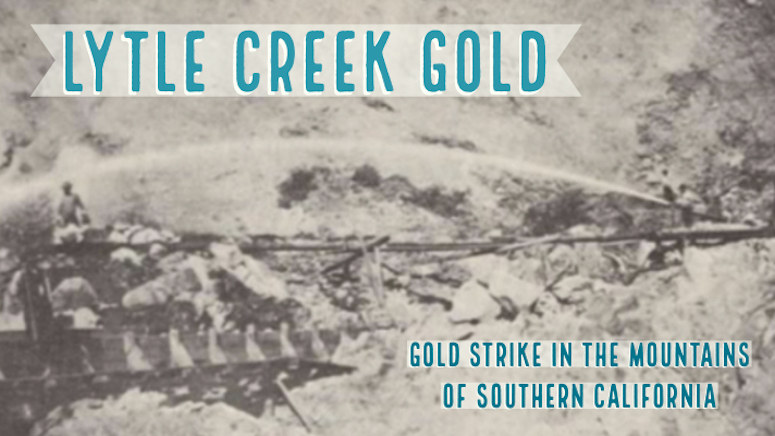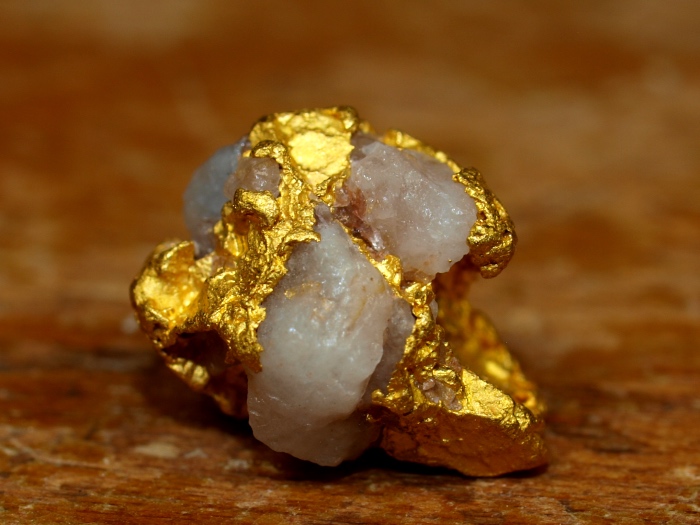
Southern California has its fair share of gold rushes. While it’s true that hey never reached the excitement levels of the discoveries of the Mother Lode, that doesn’t mean that they weren’t significant. Some surprisingly rich gold strikes were made in the desert of SoCal.
One lesser-known discovery was made at Lytle Creek, in the mountains northwest of San Bernardino. This area is no just outside on of the largest metropolitan areas in the United States, but at the time of the discovery this was a harsh, desolate, and largely unexplored region.
Gold is Found at Lytle Creek
Prospectors first found gold by panning the gravels of Lytle Creek in the spring of 1864. Miners worked the creek gravels by hand for several years, using gold pans and crude hand-built sluice boxes to extract the gold from the creek.
Considerable gold was found during these first few years. Even with limited materials and basic placer methods, a small group of men were able to recover good enough gold to attract interest by investors.
The mining efforts increase considerably at Lytle Creek in 1867 when hydraulic mining was brought to the lower section of the creek. A large mining company routed much of the creek through large hydraulic monitors to was away gravels for their mining operation. For a period of roughly 12 years, these hydraulic mines washed the land and recovered lots of gold in the vicinity of Texas Hill.
Read: You Can Still Find Gold at Old Hydraulic Mine Sites
The Source of the Gold
There are likely a few different sources for the gold at Lytle Creek. If you inspect the placer deposits found in the creek, you will notice that the pieces of gold can look quite different in appearance, indicating that there are more that just one source feeding into the placers.
There have been a few lodes discovered in the area, and some have produced some very high-grade ore. For the most part however, this is a placer mining district. Most of the gold you find in the creek will be smooth and water worn.
Not all of the gold is found in the creek though. In fact, there was once an ancient river channel that ran through this area. Parts of it are exposed as bench deposits throughout the Lytle Creek Canyon. These are the gravels that the early hydraulic mining operation were exposing. You can still find gold in this area and much of it is high above the current creek bed.
Historic mining occurred from the mouth of Lytle Creek nearly all the way up to its headwaters. The creek splits into an Upper, Middle and South Fork Lytle Creek. Each of these drainages contain gold, as well as many of the small dry tributaries that feed into them.

Active Claims
Be aware that there are still active claims in the area. In fact, most of the time the entire gold-bearing section of Lytle Creek is claimed up. There are some active prospecting clubs in Southern California that you can join to get access to this area if you want to do some prospecting.
There is open ground that is gold bearing, but you will need to do your research to find it. I also suggest hiking to get away from the roads as best as you can. The gold isn’t always where everyone else is looking. Some of the higher tributaries draining off of Mount Baldy, Timber Peak, and Cucamonga Peak also contain gold.
How to Find Gold
The proper equipment to use will depend on the area that you are working and the time of year. Water is the main determining factor. If you are mining right along the creek then a basic sluice box is an ideal tool. However, some of the richest gravels area actually above the main creek, and much of the year you may not be able to access any water. In this case you will do best to use a dry washer or some type of recirculating system so you can recycle water.
Metal detecting could work, but I have heard that the abundance of metal trash targets makes it almost impossible in most areas. Simply due the the proximity to Los Angeles and the huge amount of recreation that has occurred in this area over the past century there is a lot of metal rubbish. Lots of people use this area for shooting and target practice. Separating out the gold nuggets from all those bullets will take a lot of patience.
Next: Early Spring Prospecting in the Desert
